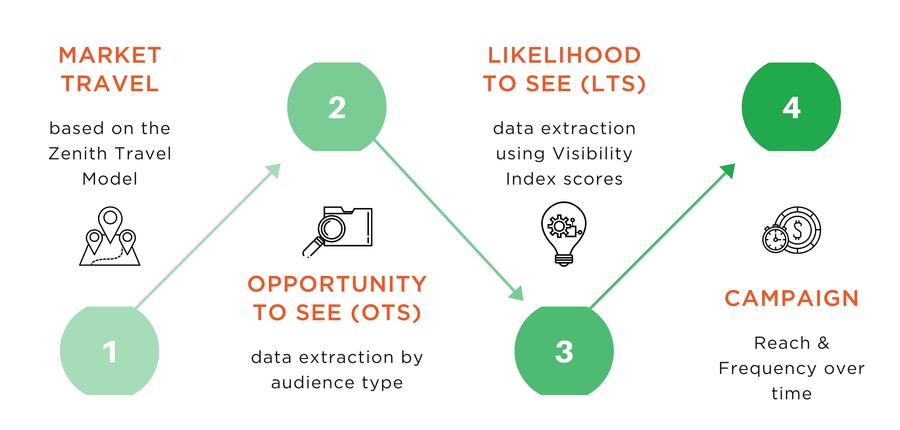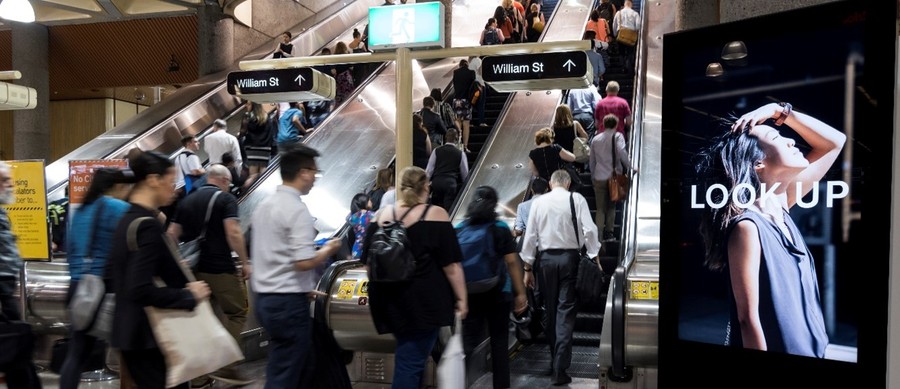MOVE Methodology
MOVE is data based
MOVE is a ‘world leading’ outdoor audience measurement providing accurate reach and frequency measures for Out of Home (OOH) campaigns.
The MOVE system uses a comprehensive travel and transport model in association with discrete environmental models to determine total audiences interacting with individual OOH faces.
Read on to get a better understanding of the four steps that enable MOVE and how OOH advertising campaigns are measured.
Methodology: four steps to MOVE

1. Market Travel
Veitch Lister Consulting, experts in transport planning and modelling, generate a city-wide travel model. The model uses Australian Bureau of Statistics and third-party data on transport networks, geographical breakdowns, population profiles, travel behaviour and trip attractors. This determines where the entire population of a market travels on a typical day, including journey purpose, travel mode, route taken and demographic profile.

2. Opportunity to See
Using the model and signage characteristics of each single sign, the potential audience or Opportunity to See (OTS) is determined. These signage characteristics include: size, illumination, GPS location, orientation, vehicle position and route (bus/train/tram), layout and location (shopping centre, station, airport, petrol station).
It is the responsibility of individual operators and MOVE to ensure that site classification for each face is accurate within the system.

3. Likelihood to See
The Likelihood to See (LTS) has been derived from more than 15 years of visibility research using a range of eye tracking studies to determine what factors influence a person's likelihood to see a face. A range of visibility factors are applied to each sign, such as size, view time, offset to audience, illumination and the environment where the sign exists, enabling the OTS to be converted to actual audience, also referred to as LTS.
![]()
The majority of this research has been undertaken by Simon Cooper and Dr Paul Barber who worked on the successful POSTAR audience measurement system in the UK.
4. Campaign Reach and Frequency
Finally, to bring all of this together and measure a campaign, the variability of travel over time needs to be accounted for. This was done through a nine-day longitudinal travel survey, conducted using 3,000 respondents. The purpose of this survey was to understand how often people’s travel varied over time.
The results of the survey were used to generate the Reach and Frequency model, enabling MOVE reports to generate campaign reach over time.








 ColorCuboid Designs
ColorCuboid Designs


